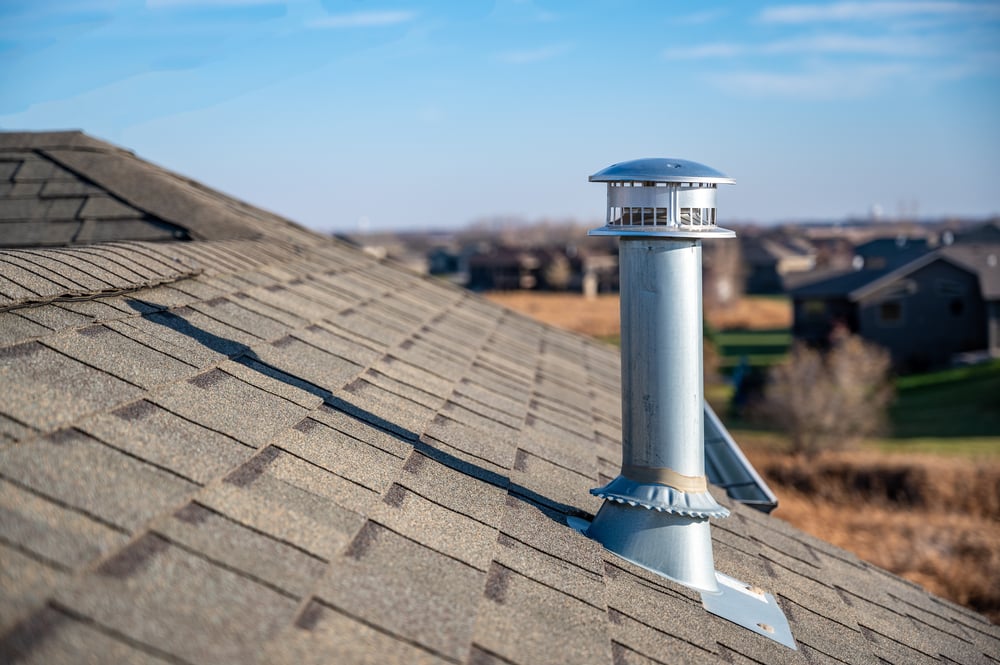Are you currently searching for critical info on What Is A Plumbing Vent & How Do They Work??

Appropriate ventilation in plumbing systems is often overlooked, yet it is essential for maintaining the functionality and security of your home's pipes. Ventilation assists manage air pressure, stop the build-up of hazardous gases, and make sure the reliable elimination of waste. In this overview, we will explore the importance of appropriate plumbing ventilation, exactly how it works, and the benefits it brings to your plumbing system.
Comprehending Ventilation in Pipes
Air flow in pipes describes the network of pipes that permit air to stream via the drainage system. These vents offer numerous objectives, consisting of controling atmospheric pressure within the pipes, protecting against sewer gases from entering the home, and helping in the smooth flow of wastewater.
How Air Flow Functions in Plumbing Systems
Air Pressure Law
Correct ventilation maintains well balanced atmospheric pressure within the plumbing system. When water flows through pipelines, it displaces air. Without appropriate ventilation, this variation can develop negative stress, leading to slow down drains pipes or siphoning of water from traps, which can trigger undesirable smells to seep into the home.
Stopping Drain Gas Buildup
One of the most crucial functions of plumbing vents is to stop sewage system gases, such as methane and hydrogen sulfide, from accumulating within the home. These gases can pose major wellness dangers and are highly flammable. Vent pipelines enable these gases to run away securely outside.
Helping in Waste Removal
Ventilation assists in the effective removal of wastewater by avoiding airlocks in the drainage system. When air can move openly with the vents, it allows water and waste to move smoothly through the pipelines, lowering the danger of clogs and back-ups.
Sorts Of Plumbing Vents
Main Heap Vent
The primary pile vent, also referred to as the vent pile, is the primary air vent in a plumbing system. It expands from the major drainpipe align through the roof, permitting gases to leave and fresh air to get in the system.
Branch Vent
Branch vents connect to the major stack vent and offer specific components, such as sinks, bathrooms, and showers. These vents make certain that each fixture has ample ventilation to work properly.
Air Admittance Shutoff (AAV).
An Air Admission Valve (AAV) is a one-way shutoff that allows air to enter the pipes system without the demand for a conventional vent pipe expanding via the roof covering. AAVs are commonly made use of in renovations or locations where setting up a common vent is unwise.
Signs of Poor Air Flow in Pipes.
Slow Draining Fixtures.
If your sinks, tubs, or commodes are draining gradually, it could be an indication of inadequate ventilation. Poor air circulation can create a vacuum result, making it difficult for water to drain appropriately.
Gurgling Appears.
Gurgling audios coming from drains pipes are commonly a result of air being sucked with water traps because of adverse pressure in the pipes. This is a clear indication of insufficient ventilation.
Undesirable Smells.
Sewer odors inside your home are a warning that your plumbing system is not correctly ventilated. This might imply that drain gases are not being adequately vented outside, causing potentially dangerous problems.
Typical Ventilation Mistakes.
Insufficient Vent Sizing.
Making use of small air vent pipes can lead to inadequate air flow and pressure imbalances in the system. It's necessary to use vents that satisfy the particular needs of your pipes system.
Improper Vent Positioning.
Putting vents as well far from the components they offer can reduce their effectiveness. Correct positioning makes sure that air can stream freely and successfully with the system.
Ignoring Code Needs.
Building codes give certain guidelines for pipes air flow. Disregarding these codes can cause a system that falls short to operate appropriately and might cause costly repairs or carcinogen.
Advantages of Correct Ventilation.
Enhanced System Performance.
Effectively ventilated plumbing systems run more effectively, with fewer blockages, faster draining, and much less stress on the pipelines. This efficiency extends the lifespan of the plumbing system.
Improved Air High Quality.
By preventing sewer gases from entering your home, appropriate ventilation contributes to much better indoor air high quality, making your living atmosphere healthier and a lot more comfy.
Stopping Water Damage.
Ample air flow aids prevent water from being siphoned out of catches, which can bring about drain gases entering the home and triggering water damages over time.
Steps to Make Certain Appropriate Ventilation.
Consulting Plumbing Codes.
Constantly seek advice from local pipes codes when creating or customizing your plumbing system. These codes give the needed standards for correct venting and guarantee your system fulfills safety standards.
Routine Evaluation and Upkeep.
Routine evaluations can assist identify prospective air flow issues before they end up being major problems. Maintenance jobs, such as cleaning air vent pipelines and looking for obstructions, are essential for maintaining the system in good working order.
Specialist Setup.
For new installations or significant adjustments, it's important to work with a specialist plumbing technician. They have the competence to make sure the air flow system is properly designed and mounted according to code.
Conclusion.
Appropriate ventilation is a critical part of any type of plumbing system, ensuring that it operates successfully and safely. By comprehending the relevance of ventilation, recognizing the signs of inadequate ventilation, and taking actions to maintain your system, you can stop costly concerns and safeguard your home's air top quality.
4 Things You Should Know About Your Plumbing Vents
What Plumbing Vents Are
Also called a vent stack, a plumbing vent is a vertical pipe attached to your drain line that runs through your roof. The plumbing vent pipe, or plumbing air vent, removes gas and odors from your plumbing system and allows fresh air to enter the pipes, helping the water to flow out of the drain pipes.
What Plumbing Vents Do
Plumbing vents have two basic functions. One of which is to allow unpleasant smelling wastewater and sewer gasses to escape your plumbing system instead of entering your home. Plumbing vent pipes are typically located on roofs, away from windows, to ensure the fumes exit the home completely.
The other function of the plumbing vent is to move fresh air into your plumbing system. This helps move water through every plumbing fixture in your house, like toilets and sink drains. Think of the way in which you need to let a little air into the bottle as you pour soda in order to make the drink flow smoothly.
Different Types of Plumbing Vents
True vent: This is the most common vent option. In simplest terms, a true vent is a vertical pipe attached to your drain line that exits through the roof. They often function as the main vent that other fixtures can connect to. Re-vent pipe or auxiliary vent: Attached to the drain line near specific plumbing fixtures, re-vent pipes run up and over to connect to the main vent. Common vent: Two plumbing fixtures installed on opposite sides of a wall are typically tied into the vent stack using something known as a sanitary cross. Wet vent: This venting option operates as a drain pipe and a vent at the same time. Wet vent drainage systems drain water from one fixture while venting the air from another. Although they’ve been used for over 100 years, wet vent systems have only recently been added to the plumbing code in many areas. If you’re planning on installing one in a bathroom remodel, make sure you check your local code prior to construction. Loop vent: For free-standing fixtures like kitchen island sinks, loop vents are ideal. These vent pipes run under the floor, rise from the P-trap, and create a loop inside the cabinet sink. Air admittance valve: An AAV is a one-way mechanical valve typically installed at the site of the plumbing fixture. AAVs allow venting to occur without having to tie into a larger venting system. They’re ideal for venting fixtures where you aren’t able to easily connect to an existing vent system. Common Plumbing Vent Issues
Although vent pipes typically don’t have water flowing through them, they’re still subject to many typical plumbing issues. For example, clogs are one of the most common problems associated with sewer vent pipes. If your vent pipe gets clogged, all of your plumbing fixtures tied into the vent stack will be affected.
A sink with a slow drain that bubbles and gurgles or a strong sewage smell around your toilet are both indicators that your toilet vent pipe is clogged. Because most vent pipes exit through the roof, old leaves, twigs or even a bird’s nest could be clogging the pipe.
Clogs in your vent pipe system cause a buildup of negative pressure, meaning that water won’t be able to flow out of your home very well. It’s similar to putting your finger over the opening of a straw to trap water inside. When you remove your finger, the water is able to flow out of the straw.
If you suspect you have any blockage in your vent, make sure you have a professional come examine the situation. Left unchecked, a blocked air vent can lead to other costly repairs, like leaks and sediment buildup.
Under Pressure
Pipe vents are essential aspects of a home’s plumbing system. Owning a home means learning about all sorts of things you never put much thought into before. But by understanding as much as you can about the important systems of your home, you can keep those budgets intact and those anxiety levels low.
https://www.homeserve.com/en-us/blog/home-improvement/plumbing-vents/

I am just very interested by Why Plumbing Air Vents Are Important and I am praying you enjoyed my entry. Do you know about another person who is excited by the topic? Why not share it. Thank you for your time. Kindly check up our website back soon.
Get Estimate